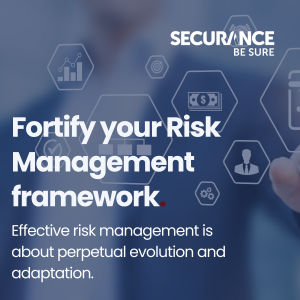Operational Risk Management: Avoiding common pitfalls and building resilience
Operational Risk Management involves the myriad uncertainties and inefficiencies inherent in the day-to-day activities of a company. These can stem from various sources—system failures, process inefficiencies, human error, or external events. Addressing these risks is pivotal, not merely for compliance or protecting assets, but as an essential strategy for organisational resilience and competitive advantage
The common pitfalls
The journey of operational risk management is fraught with potential missteps that can undermine an organisation’s objectives. Here are some nuanced issues often overlooked in traditional risk management approaches:
Compartmentalised risk functions: When risk management is confined to specific departments rather than integrated throughout the organisation, critical insights can be missed.
Dependency on outdated systems: Continued reliance on legacy systems without embracing digital advancements can slow response times and hinder risk detection.
Static risk models: Many organisations stick to risk models that don’t account for the dynamic nature of business, missing out on identifying evolving threats
A deeper understanding of these challenges is the first step towards crafting a more effective Risk Management strategy.
Best practices from our Advisory experts
Transforming an organisation’s approach to operational risk management involves strategic adjustments and not just tactical fixes. Here are some advanced practices that can fortify your risk management framework:
Cultivate a dialogue-driven culture: Foster an environment where discussing risks is encouraged at all levels, enhancing transparency and collective understanding.
Regularly update risk frameworks: It’s vital to ensure that your risk management frameworks keep pace with changes both within and outside the organisation. This involves regular reviews and updates of your risk policies and procedures to reflect new developments in your industry, changes in the regulatory landscape, or shifts in your operational environment.
Streamline reporting mechanisms: Implementing streamlined and efficient reporting mechanisms is crucial. These should be designed to provide clear, concise, and timely information to decision-makers. Effective reporting systems help in identifying potential risks early and provide actionable insights to mitigate them before they escalate.

It requires a forward-thinking approach that not only addresses current risks but also anticipates future challenges.
Advancing Operational Risk Management through tooling
In the realm of operational risk management, technology is not just a tool but a strategic ally. At Securance, our partnerships with leading technology providers equip us with sophisticated Risk Management tools that deliver:
Proactive risk detection: We utilize advanced predictive analytics to anticipate and mitigate potential disruptions before they impact our business operations. This proactive approach helps maintain continuity and integrity throughout our processes, ensuring that risks are managed efficiently.
Integrated risk solutions: Our Risk Management tooling partners provide comprehensive platforms that offer a holistic view of risks across the organisation. This integration allows for better-informed decision-making, as risk data from various departments is centralised, ensuring that all potential risks are visible and managed effectively.
Advanced Cybersecurity protocols: Through these partnerships, we implement the latest in Cybersecurity measures to protect against emerging digital threats. These protocols are continuously updated, responding to new cyber risks as they develop, and safeguarding our sensitive data and systems against breaches.
Conclusion: Embracing continuous evolution
Effective risk management is about perpetual evolution and adaptation. It requires a forward-thinking approach that not only addresses current risks but also anticipates future challenges. Organizations committed to continuously refining their risk management practices are better positioned to thrive in an unpredictable business environment.
By understanding the common pitfalls and integrating cutting-edge technology through Risk management tooling, companies can secure a robust operational framework that drives sustained success.



